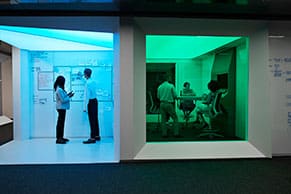The restaurant business is a fast-paced, competitive industry, and not every new location that opens survives. To make it past the critical early years, restaurant owners must regularly assess the state of the business against internal goals and industry benchmarks. The best way to do this is through a study of a restaurant’s key performance indicators (KPIs). The KPIs listed in this article offer insights into a restaurant’s positive performance while also highlighting areas that need improvement.
What Are Restaurant Key Performance Indicators (KPIs)?
Restaurant KPIs are quantifiable measurements that help restaurant owners and managers gauge their business’s overall performance and health. These metrics provide useful insights into various aspects of a restaurant’s operations, including financial stability, customer satisfaction and employee productivity. A few of the most important restaurant KPIs include sales, cost of goods sold (COGS), labor costs and customer satisfaction scores.
Key Takeaways
- By regularly monitoring KPIs, restaurants can identify where to optimize processes, reduce costs and improve profitability.
- KPIs including sales, historical sales, prime cost and profit margin work together to provide an overall view of a restaurant’s financial health.
- Front-of-house KPIs, like server benchmarks, customer satisfaction scores and table turnover rate, help improve service quality and the customer experience.
- Back-of-house KPIs, such as menu-item profitability, COGS, labor costs and turnover rate, are critical for maximizing operational efficiency and controlling costs.
- KPI tracking and analysis can be facilitated by integrated software solutions that provide real-time visibility into performance metrics.
Why Measure KPIs for Restaurants?
Regularly monitoring KPIs empowers restaurateurs with the ability to make data-driven decisions to optimize their processes, reduce costs and improve profitability. Tracking overall performance metrics, as well as more specific front-of-house and back-of-house KPIs, allows restaurant owners to identify areas of strength and weakness, set realistic goals and make informed business decisions. For example, some KPIs, like average table turnover time and customer feedback scores, can reveal insights into the guest experience that help managers set service-quality benchmarks. Similarly, back-of-house metrics, like food cost percentage and employee turnover, can inform decisions about financials, menu choices, inventory management and staff training.
For example, say a restaurant notices a steep rise in food cost. The related KPI can then be investigated to determine whether the increase stems from over-portioning, waste or inefficient purchasing practices. Once the root cause is known, the restaurant can implement a targeted solution to reduce costs and, in turn, improve profitability.
Overall Performance KPIs
Overall performance KPIs provide a comprehensive view of a restaurant’s financial health and operational efficiency. These metrics help restaurant owners and managers assess their business’s success and identify areas for improvement. Four main categories that fall under this umbrella of KPIs are sales, historical sales, prime cost and profit margin.
1. Sales
Sales are one of the most critical indicators of success for any business. In the restaurant industry, sales impact many key metrics, such as break-even point and gross profit.
- Break-even point measures the sales volume required to recoup an investment. Break-even point is a crucial metric when opening a new restaurant or considering any substantial investment, such as buying new equipment or purchasing a building for a new location. Here is the formula to calculate the break-even point:
Break-even point = Total fixed costs / [(Total sales – Total variable costs) / Total sales]
Break-even point = Total fixed costs / Contribution margin
Fixed costs are independent of sales and don’t change. They include rent, equipment costs and salaries. Variable costs are dependent on sales and include costs for raw materials and hourly wages. The denominator of the break-even point formula represents the contribution margin, which is the amount of revenue left after a company pays for its variable costs and is used to cover fixed expenses.
- Gross profit tells you how much money the restaurant is making after COGS is subtracted from total sales (or revenue). COGS includes all of the direct costs a restaurant incurs to prepare and serve food and beverages to customers. (See KPI No. 9 for more on COGS.) Here is the formula to calculate gross profit:
Gross profit = Total sales – COGS
2. Historical Sales
Historical sales data tracks how a restaurant performs over time. It’s best to track this KPI by day, week, month and year. Tracking historical sales helps identify trends, measure against past performance and point out busiest times of the year. Long-term sales data can also lead to more accurate forecasting, better planning and ways to reduce costs.
3. Prime Cost
Prime cost makes up the majority of any restaurant’s variable costs and, therefore, is one of the most critical KPIs to track. Prime cost is found by adding total labor costs to COGS. Here is the formula:
Prime cost = Labor + COGS
Prime cost as % of sales = (Prime cost / Total sales) x 100
Generally speaking, the ideal prime cost in the restaurant industry is around 60% or less. Figuring out how to decrease prime costs without sacrificing quality can generate higher profits for restaurant owners.
4. Profit Margin
Profit margin measures how much of each dollar in sales revenue is kept as profit after accounting for all expenses. In the context of a restaurant, profit margin can help in pricing menu items, controlling costs and understanding the overall financial health of the business. There are a few key types of profit margins to consider:
- Gross profit margin measures the profitability of menu items after accounting for the direct costs of producing them (primarily food costs). The formula to calculate gross profit margin is:
Gross profit margin = (Selling price – COGS) / Selling price) x 100
For example, if a grilled chicken sandwich sells for $5.29 and costs $3.44 to make, gross profit margin would be 35%.
- Operating profit margin takes into account COGS plus operating expenses, like labor, rent and utilities, that don’t fall under COGS. It gives a more comprehensive view of the restaurant’s profitability. The formula to calculate operating profit margin is:
Operating profit margin = (Operating income / Net sales) x 100
Operating income equals revenue less COGS less operating expenses. Net sales refers to the total revenue from sales after deductions for returns, discounts and allowances.
- Net profit margin is the bottom-line profitability after all expenses, including taxes and interest, are deducted. The average net profit margin for restaurants tends to fall between 3% and 5%. The formula to calculate net profit margin is:
Net profit margin = (Net income / Revenue) x 100
Net income equals total revenue less total expenses, including taxes, interest and other nonoperating expenses. Revenue is the total amount of money earned from sales before any deductions
Front-of House KPIs
Front-of-house KPIs measure the performance of a restaurant’s customer-facing aspects, including service quality and customer satisfaction. By tracking these metrics, restaurant owners can be sure their staff is providing excellent service, and they can identify top-performing employees and make more informed decisions to improve the guest experience. Some essential front-of-house KPIs to monitor are server benchmarks, customer satisfaction score and table turnover rate.
5. Server Benchmarks
Servers are essential to restaurant operations. They act as brand ambassadors and directly impact key business elements, such as sales and customer satisfaction. Server productivity can be measured in a variety of ways, including:
- Per-person average (PPA), or per-guest average, is a way to track the volume of sales generated by a server. It’s important to track this data to see which servers drive the highest sales for your business. When reviewing a server’s PPA, other elements should also be taken into account, such as customer service, table turn time and number of guests served per hour. The formula to calculate PPA is:
Per-person average = Total server sales / Total number of guests served by server
- Number of guests served per server per hour offers insights into the efficiency of each staff member. It’s also helpful to compare the number of guests served alongside customer comments; top servers will score highly on both categories. If a server has a high number of guests but poor guest feedback, more training or scaling back customer volume may be in order. The formula to calculate number of guests served per server per hour is:
Number of guests served per server per hour = Total number of guests served / Number of service hours worked
- Server errors per guest highlights the frequency of mistakes; incorrectly rung items in a POS system can lead to lost revenue (when undercharged), overcharged customers (who become unhappy) and poor team morale. By identifying the number of server errors, management can take steps to address the problem and reduce the number of mistakes. The formula to calculate server errors per guest is:
Server errors per guest = Total number of server errors / Total number of items rung in
6. Customer Satisfaction Scores
Customer satisfaction scores measure how well a restaurant meets guest expectations. Scores can be gathered through various methods, such as surveys, online reviews or feedback cards. These scores allow restaurants to identify areas of excellence and areas in need of improvement, providing a framework to address common complaints, implement suggested improvements and capitalize on strengths.
The net promoter score (NPS) is a common way to calculate customer satisfaction. It’s measured by asking customers to rate their likelihood of recommending the restaurant on a scale of 0 to 10, 10 being the best score. Customers who give a score of 9 or 10 are considered “promoters,” 7–8 are “passives” and 0–6 are considered “detractors.” The formula to calculate NPS is:
NPS = Percentage of promoters – Percentage of detractors
The higher the NPS percentage, the better.
7. Table Turnover Rate
Table turnover rate measures how efficiently a restaurant uses its seating capacity by recording the number of times a table is occupied and vacated during a specific period, typically a shift or a day. A high table turnover rate indicates that the restaurant is effectively managing its seating and serving customers promptly, which can lead to increased revenue and greater customer satisfaction. The formula to calculate table turnover rate is:
Table turnover rate = Total number of parties served / Tables available during a given period
For example, if a restaurant has 15 tables and serves 30 parties during a lunch shift, the table turnover rate would be two turns per table. This means that, on average, each table was occupied and vacated two times during the lunch shift.
Tracking turnover rates makes it easier to identify ways to optimize seating arrangements and determine whether there’s a need to streamline service. A low turnover rate could indicate that tables aren’t being cleared and reset quickly enough or that the menu and service are not conducive to efficient dining. On the other hand, too low a rate could indicate that customers are being or feeling rushed, which could diminish their experience.
Back-of-House KPIs
Back-of-house KPIs focus on the operational aspects of a restaurant that customers don’t see but that are critical to the business’s success, like inventory management, kitchen operations and back-of-house staff performance. Some essential back-of-house KPIs include menu item profitability, COGS, labor costs and turnover rate.
8. Menu-Item Profitability
Menu-item profitability is a KPI used to help restaurants understand the financial contribution of each dish on their menu. The formula to calculate menu-item profitability is:
Menu-item profitability = Selling price – (Cost of ingredients + Direct labor cost)
Calculating the profit generated by each menu item supports pricing, menu and inventory decisions. For example, analyzing menu-item profitability allows restaurants to categorize dishes into four main groups:
- Stars: Dishes with high popularity and high profitability
- Plow horses: Dishes with high popularity but low profitability
- Puzzles: Dishes with low popularity but high profitability
- Dogs: Dishes with low popularity and low profitability
This categorization helps inform menu engineering decisions, such as featuring high-profit items in prominent positions on the menu or removing unprofitable dishes.
Menu-item profitability can also highlight which ingredients to stock and in what quantities, as well as how to appropriately price items. When calculating menu-item profitability, it’s important to consider additional factors, such as fluctuations in ingredient costs, portion sizes and prep time.
9. COGS
To increase your restaurant’s bottom line, look for ways to decrease the cost of goods sold without sacrificing quality. Carrying a leaner inventory, taking daily inventory on key items and having a plan to ensure maximum use of all purchased products are all worthy strategies to adopt.
-
Food is a substantial cost for any restaurant. One good way to keep food costs under control is by tracking food cost percentage. Food cost percentage determines the difference between the cost of making menu items and the price customers pay. Most successful restaurants have a food cost percentage of 28% to 35%. Keeping food costs under control is essential to profitability.
The first step in determining food cost percentage is to find food cost. The formula involves four variables:
- OI (opening inventory) is the cost of food on hand at the beginning of a period.
- P (product) is any new food bought during the period.
- EI (ending inventory) is the food left over at the end of the period.
- S (sales) is the total amount of food sold during the period.
Product cost or COGS = (OI + P – EI) / S
The formula to calculate food cost percentage is:
Food cost percentage = (Food cost / Total sales) x 100
-
Liquor cost is another component of COGS. Restaurants that sell alcohol, beer, wine and affiliated liquor items
must also calculate liquor product cost, using the same formula as above, except that when determining the product cost/COGS:
- OI is the cost of alcohol on hand at the beginning of a period.
- P is any new alcohol bought during the period.
- EI is the alcohol left over at the end of the period.
- S is the total amount of alcohol sold during the period.
Liquor cost percentage varies by type of alcohol, with liquor at 15%, beer at 22% and wine at 30% percent.
The formula to calculate liquid cost percentage is:
Liquor cost percentage = [Liquor cost (by type) / Total sales (by type)] x 100
10. Labor Costs
The cost of labor is a considerable expense for most restaurants. Labor costs include wages, taxes, discounts and any employee benefits. Typical labor cost is around 30% of a restaurant’s total revenue, but costs usually vary depending on restaurant type. For example, fast-food restaurants tend to have a lower labor cost percentage than a fine-dining establishment. Labor costs should be measured carefully and viewed in relation to prime cost, as laid out in No. 3, above.
11. Turnover Rate
High staff turnover is another challenge facing the restaurant industry. The average annual restaurant turnover rate between 2013 and 2023 sits just shy of 79%. This means that roughly eight out of every 10 workers will leave and be replaced by a new employee within a year. Here is the formula to calculate turnover rate:
Turnover rate = [(Number of employees who leave in a period) / (Average number of employees at organization during same period)] x 100
It’s wise to analyze total labor costs and employee turnover during labor reviews. Also, keep an eye out for ways to decrease costs of labor while increasing retention.
Track Your Restaurant’s KPIs With NetSuite
In the fast-moving restaurant business, up-to-date information about business performance is vital for success. NetSuite’s role-based dashboards and reports provide real-time visibility into KPIs, so restaurants can monitor operations and quickly respond to problems and trends. Analytics are integrated into a unified set of business applications that help restaurants, franchisors and hospitality businesses increase revenue and cut costs. That integration ensures instant access to KPIs that track sales, costs and profitability, eliminating the need to manually consolidate and reconcile information from multiple sources. A role-based, customizable graphical dashboard allows managers and other authorized users to easily track the data they need to make better-informed business decisions. A guest service dashboard also helps restaurants improve their understanding of guest behavior, resolve issues and heighten the customer experience to drive business success.
Given the industry’s fast pace and notoriously low profit margins, tracking and acting on KPIs are essential to success. By regularly analyzing KPIs, such as sales, profit margins, table turnover rates, customer satisfaction scores and menu-item profitability, restaurants can get a better sense of their financial health, operational efficiency and level of customer satisfaction. KPIs also help reveal areas for improvement while providing a framework to facilitate informed decisions and optimize operations for long-term success.
Restaurant KPIs FAQs
What is KPI in a restaurant?
A restaurant KPI, or key performance indicator, is a quantifiable measurement that helps restaurant owners and managers gauge their business’s overall performance and health. These metrics provide useful insights into various aspects of a restaurant’s operations, including financial stability, customer satisfaction and employee productivity.
What are 5 key metrics that will be used to measure restaurant performance?
A few of the most important metrics used to gauge restaurant performance include sales, cost of goods sold, labor costs, customer satisfaction scores and profit margin.
How often should restaurant KPIs be monitored and evaluated?
Restaurant key performance indicators (KPIs) should be monitored and evaluated regularly, depending on the specific KPI and the restaurant’s goals. Some KPIs, like sales and labor costs, should be monitored daily, while metrics like customer satisfaction can be reviewed weekly and gross profit monitored monthly.
How can restaurant KPIs help improve profitability?
Key performance indicators (KPIs) help restaurants identify strengths and weaknesses, establish goals and make data-driven business decisions that optimize processes, cut costs and boost the bottom line.
What tools or software can help track restaurant KPIs effectively?
Enterprise resource management solutions can be used to effectively track and monitor key performance indicators (KPIs) over time. These unified solutions can help make sure decision-makers have real-time access to the data they need to best support the business.









